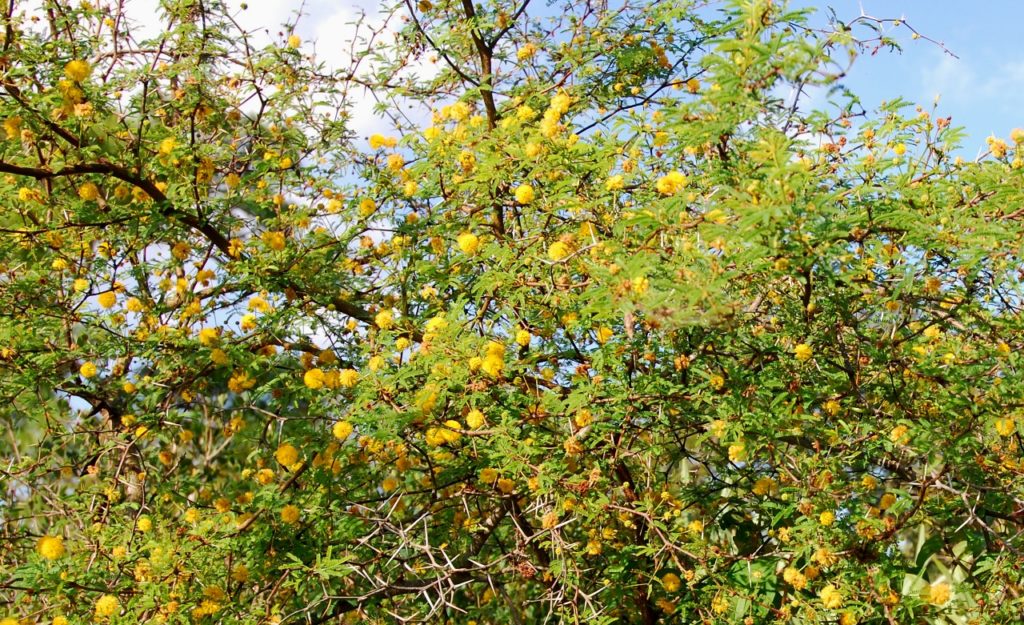
Pineland Acacia
Acacia pinetorum
Pineland Acacia has a new scientific name of Vachellia farnesiana var. pinetorum. This is a native of the Keys and Miami Rocklands. It isn’t very tolerant of salt air or salt water flooding, but is very drought tolerant.
The tiny leaves add a distinct texture to the landscape and the small flowers in half inch yellow globes are very fragrant. I like to use this plant near areas where the fragrance of its flowers can be appreciated.
Although the growth is normally low, it will reach ten feet or more over time and makes an interesting small tree that you can walk under. This is a nice feature if you want to avoid the sharp spines. It is similar to what you would find in our American deserts.
If kept low, it makes a great mounding mass of spiney growth that keeps people out of more delicate areas of the garden. The spines are irritating, yet won’t tear the skin as Wild Lime will. The flowers are followed by three inch long tough pods containing several seeds.
This is the larval host for the Acacia Blue butterfly, which was once called the Nickerbean Blue. It migrates from the West Indies and can be found, if at all, on Big Pine Key and Bahia Honda. Pineland Acacia is not a great butterfly nectar plant, although it attracts other pollinators.
When planting a rockland or Keys theme, this is one of the plants that should be used. Mix it in with Lignum Vitae, Chapman’s Cassia, Locustberry, Indigo Berry, Joewood, Quailberry, Slash Pine, Rhacoma, Beautyberry, Tetrazygia, Pineland Privet, Bloodberry, Guettarda, Smooth Strongbark, Mexican Alvaradoa, Marlberry, Myrsine, Krugs Holly, Wild Coffee and the Thatch Palms.